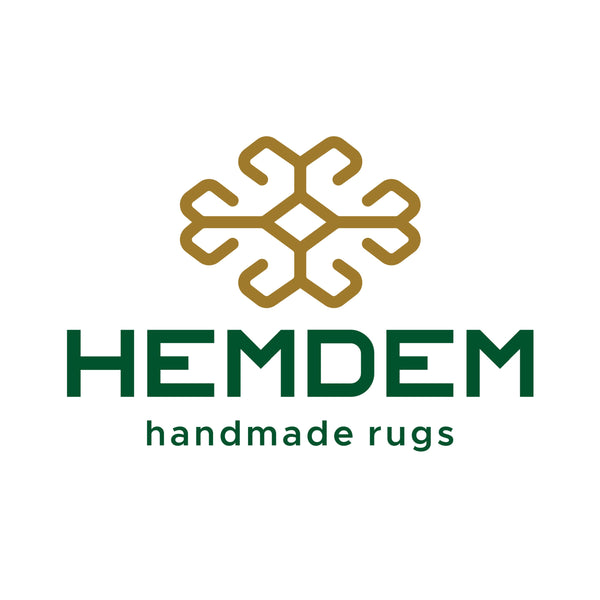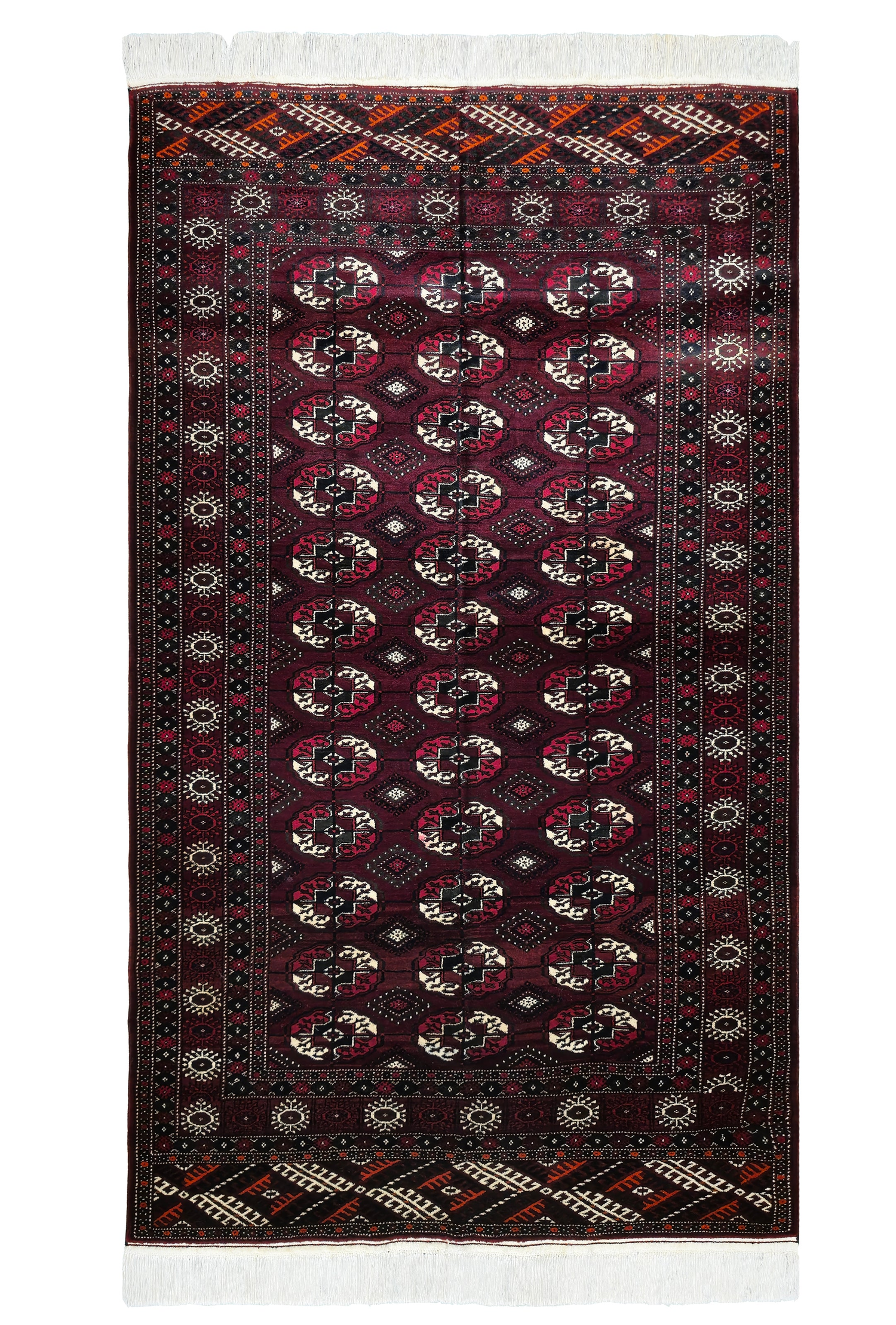
Turkmen Rug – Discover the Timeless Art of Tribal Weaving from Central Asia
Few cultural artifacts embody the nomadic spirit and artistic mastery of Central Asia like the Turkmen rug. Also known as Turkoman rugs, these hand-woven treasures are steeped in history, heritage, and symbolism. Whether you're a collector, an interior designer, or simply a lover of traditional textiles, understanding Turkmen rugs opens a window into a centuries-old craft that continues to captivate the world.



What Is a Turkmen Rug?
A Turkmen rug is a handmade carpet woven by the Turkmen tribes of Central Asia, particularly in modern-day Turkmenistan, northern Iran, and Afghanistan. Characterized by geometric motifs, deep red hues, and dense knotting, these rugs were traditionally used in yurts for warmth, prayer, or ceremonial purposes.
There are several distinct tribal styles, the most renowned being:
- Tekke rugs – featuring repeating gul medallions.
- Ersari rugs – known for larger-scale designs and earthy tones.
- Yomut rugs – with intricate borders and diamond motifs.
Where Are Turkoman Rugs Made?
Historically, Turkoman rugs have been made in:
- Turkmenistan – particularly around Ashgabat, Merv, and Bukhara.
- Northern Afghanistan – home to many Ersari weavers.
- Northeastern Iran – especially by the Yomut tribes.
Each region imparts subtle differences in design, materials, and knotting style, reflecting its unique cultural lineage.
What Makes Turkmen Rugs So Special?
Symbolism in Every Knot
Turkmen rugs are rich in symbolism. The most iconic is the “gul” motif, a tribal emblem often repeated across the rug’s surface. Each tribe has its own version of the gul, functioning like a family crest.
Vibrant Natural Dyes
Most traditional Turkmen carpets feature deep reds, achieved through natural plant-based dyes such as madder root. Accents of black, white, and indigo add contrast and depth.
Crafted by Hand, Woven With Identity
Using hand-spun wool and traditional wooden looms, these rugs carry generations of knowledge and spiritual intention. They’re not just decorative – they’re woven identities of the tribes themselves.
How to Tell If a Turkmen Rug Is Authentic
1. Look for Hand-Knotted Construction
Genuine Turkmen rugs are handknotted, not machine-made. You can identify this by examining the back of the rug — the pattern should be just as distinct as the front.
2. Examine the Motifs
Tekke guls are typically symmetrical and octagonal, while Ersari designs may be more open and spacious. Authenticity lies in the precision and repetition of these motifs.
3. Material & Texture
Most rugs use 100% wool, though some may contain camel hair or cotton warp threads. Silk is rare and typically used only in ceremonial pieces.
4. Regional Indicators
- Tekke rugs: High knot density, fine weave, intense red background.
- Ersari rugs: Coarser weave, bolder design.
- Yomut rugs: Complex borders, earthy tones.
Are Turkmen Carpets Made of Silk?
While some modern Turkmen rugs incorporate silk for decorative or luxury appeal, traditional Turkmen carpets are predominantly made of hand-spun wool. Wool provides durability, softness, and natural sheen – ideal for the nomadic lifestyle they were designed for.
Antique and Tribal Turkmen Rugs: Styles You Should Know
Tekke Rugs
- Often called “Royal Bukhara” in the market.
- Feature repeating guls, rich crimson red backgrounds.
- High knot count and silk-like wool.
Ersari Rugs
- Bolder guls, more open spacing.
- Softer red to brown tones.
- Popular in northern Afghanistan.
Yomut Rugs
- Frequent use of diagonal and border-heavy patterns.
- Earthy colors and ivory accents.
- Historically woven in Iran and eastern Turkmenistan.
Antique Turkoman Rugs
- Created over 80–100 years ago.
- Valued for natural fading, tribal history, and fine craftsmanship.
Buying Guide – Where to Buy Authentic Turkmen Rugs
Buying an authentic Turkmen rug is a journey into heritage. Here’s how to do it right:
Buy from Specialized Dealers
At Hemdem Rugs, every rug is curated directly from local artisans and verified for authenticity. Explore our collection of:
- Antique Turkmen rugs
- Tekke and Ersari tribal carpets
- Turkoman runners and area rugs
Know What to Ask
- Is it hand-knotted?
- Which tribe or region does it originate from?
- What dyes and materials were used?
- Does it come with a certificate?
Understand Pricing
Turkmen rugs range from $500 to several thousand dollars, depending on age, size, knot count, and rarity.
FAQ
❓ What is true about Turkmen carpets?
They’re deeply tribal, handmade from wool, and steeped in cultural symbolism — especially the gul motif.
❓ Are Turkmen people Persian?
No. Turkmen are a distinct Turkic ethnic group primarily living in Turkmenistan, not Persian (Iranian) by origin.
❓ What’s the difference between Persian, Turkish, and Turkmen rugs?
- Persian rugs often have floral motifs and higher knot density.
- Turkish rugs favor geometric, symmetrical patterns.
- Turkmen rugs feature tribal gul medallions and deep reds.
❓ Can Turkmen rugs be washed?
Yes, but always use professional rug cleaning services. Avoid soaking or machine washing.
❓ How long do Turkmen rugs last?
A well-cared-for rug can last 50–100+ years, especially if hand-knotted.
Final Thoughts – Why Choose a Turkmen Rug?
Turkmen rugs offer more than decoration — they offer a story. From the windswept steppes of Central Asia to your living room, these rugs are a fusion of history, craftsmanship, and identity. Whether you're seeking a functional piece or a collector’s gem, the right Turkmen rug is an heirloom in the making.
Featured Collection from Hemdem Rugs
Shop Now:



